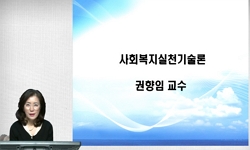Architect Bernard Tschumi had explored a new architectural conception through his own notional devices such as space, event and movement during 1970s. But, among these notions, the concept of movement was ambiguous and difficult to adopt it for archit...
http://chineseinput.net/에서 pinyin(병음)방식으로 중국어를 변환할 수 있습니다.
변환된 중국어를 복사하여 사용하시면 됩니다.
- 中文 을 입력하시려면 zhongwen을 입력하시고 space를누르시면됩니다.
- 北京 을 입력하시려면 beijing을 입력하시고 space를 누르시면 됩니다.

Bernard Tschumi의 초기 작품을 중심으로 본 움직임 연구 = A Study on the Movement focused on Bernard Tschumi's Early Works
한글로보기https://www.riss.kr/link?id=A99642440
- 저자
- 발행기관
- 학술지명
- 권호사항
-
발행연도
2009
-
작성언어
Korean
- 주제어
-
등재정보
KCI등재
-
자료형태
학술저널
- 발행기관 URL
-
수록면
27-34(8쪽)
-
KCI 피인용횟수
2
- 제공처
-
0
상세조회 -
0
다운로드
부가정보
다국어 초록 (Multilingual Abstract)
Architect Bernard Tschumi had explored a new architectural conception through his own notional devices such as space, event and movement during 1970s. But, among these notions, the concept of movement was ambiguous and difficult to adopt it for architectural design strategy. Because the movements in everyday"s behaviour or in dancing art are significantly different from architectural thought. However he had succeeded in coining the creative notion of movement as almost real body"s and of living flesh. He invented an acute methodology and bold interpretation for his early experimental works. So, this paper tried to understand and analyse his concept of movement focused on his early works. The results of this paper"s discussion are as follows; First, Tschumi"s movement concept is dynamic one operated by desire and can violate space in physical level as well as metaphysical level. Next, the movement performs the role of generator which deforms space or even generate it. Third, his movement can be readable only when you go down and bring it in practice. Also it is unblocked potentiality, undetermined sequential material and unfinished practice. Fourth, when Tschumi"s movement could be thought as walking, this walking movement makes up a story through rhetorical speech acts that are presented by turns and detours.
목차 (Table of Contents)
- Abstract
- 1. 서론
- 2. 츄미의 초기 작품들
- 3. 초기 작품에 있어 움직임의 개념적 성격
- 4. 결론
- Abstract
- 1. 서론
- 2. 츄미의 초기 작품들
- 3. 초기 작품에 있어 움직임의 개념적 성격
- 4. 결론
- 참고문헌
참고문헌 (Reference)
1 박명진, "문화,일상,대중" 한나래 2007
2 르 꼬르뷔지에, "건축을 향하여" 동녘 2007
3 Benard Tschumi, "Tschumi on Architecture" Monaceli Press 2006
4 Michel de Certeau, "The Practice of Everyday Life" University of California press 1988
5 Hyungmin Pai, "The Portfolio and the Diagram" The MIT Press 2002
6 Bernard Tschumi, "The Manhattan Transcripts" AD 1993
7 S. Giedion, "Space, Time and Architecture" Harvard Univ. Press 1967
8 Bernard Tschumi, "Le Fresnoy: Architecture In/Between" Monaceli Press 1999
9 김광현, "Le Corbusier의 “건축적 산책로”에 관한 연구" (51) : 1993
10 Bernard Tschumi, "Event-Cities2" MIT Press 2000
1 박명진, "문화,일상,대중" 한나래 2007
2 르 꼬르뷔지에, "건축을 향하여" 동녘 2007
3 Benard Tschumi, "Tschumi on Architecture" Monaceli Press 2006
4 Michel de Certeau, "The Practice of Everyday Life" University of California press 1988
5 Hyungmin Pai, "The Portfolio and the Diagram" The MIT Press 2002
6 Bernard Tschumi, "The Manhattan Transcripts" AD 1993
7 S. Giedion, "Space, Time and Architecture" Harvard Univ. Press 1967
8 Bernard Tschumi, "Le Fresnoy: Architecture In/Between" Monaceli Press 1999
9 김광현, "Le Corbusier의 “건축적 산책로”에 관한 연구" (51) : 1993
10 Bernard Tschumi, "Event-Cities2" MIT Press 2000
11 Adolf Hildebrand, "Empathy, Form, and Space" Getty center 1994
12 Bernard Tschumi, "Cinégramme Folie Le Parc de La Villette" Princeton Architectural Press 1987
13 Todd Gannon, "Bernard Tschumi, Zenith de Rouen" Princeton Architectural Press 2003
14 Giovanni Damiani, "Bernard Tschumi" Thames & Hudson 2003
15 Benard Tschumi, "Bernard Tschumi" Thames & Hudson 2003
16 Benard Tschumi, "Architecture and Disjunction" MIT Press 1996
17 Eve Blau, "Architecture and Cubism" The MIT Press 1997
동일학술지(권/호) 다른 논문
-
트리스탄과 이졸데의 무대디자인에 적용된 빛과 공간의 비교분석
- 한국실내디자인학회
- 김종진(Kim, Jong-Jin)
- 2009
- KCI등재
-
A Study on the Spatial Transparency : Focusing on Dominique Perrault’s Projects
- 한국실내디자인학회
- Kim, Eunice Ja Young(김자영)
- 2009
- KCI등재
-
- 한국실내디자인학회
- 정태용(Chung, Tae-Yong)
- 2009
- KCI등재
-
- 한국실내디자인학회
- 김종하(Kim, Jong-Ha)
- 2009
- KCI등재
분석정보
인용정보 인용지수 설명보기
학술지 이력
| 연월일 | 이력구분 | 이력상세 | 등재구분 |
|---|---|---|---|
| 2027 | 평가예정 | 재인증평가 신청대상 (재인증) | |
| 2021-01-01 | 평가 | 등재학술지 유지 (재인증) |  |
| 2018-01-01 | 평가 | 등재학술지 유지 (등재유지) |  |
| 2015-01-01 | 평가 | 등재학술지 유지 (등재유지) |  |
| 2011-01-01 | 평가 | 등재학술지 유지 (등재유지) |  |
| 2009-01-01 | 평가 | 등재학술지 유지 (등재유지) |  |
| 2007-01-01 | 평가 | 등재학술지 유지 (등재유지) |  |
| 2005-01-01 | 평가 | 등재학술지 유지 (등재유지) |  |
| 2002-01-01 | 평가 | 등재학술지 선정 (등재후보2차) |  |
| 1999-07-01 | 평가 | 등재후보학술지 선정 (신규평가) |  |
학술지 인용정보
| 기준연도 | WOS-KCI 통합IF(2년) | KCIF(2년) | KCIF(3년) |
|---|---|---|---|
| 2016 | 0.45 | 0.45 | 0.45 |
| KCIF(4년) | KCIF(5년) | 중심성지수(3년) | 즉시성지수 |
| 0.45 | 0.42 | 0.758 | 0.19 |




 ScienceON
ScienceON DBpia
DBpia






